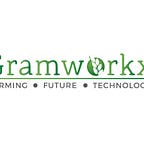Sensors for Agricultural Utility — an effective utilisation approach
Technology and innovation are critical to agriculture and farming, especially now then ever before as the average amount of arable land available per capita is reducing with the growing world population. The Food and Agriculture Organisation (FAO) of the United Nation predicts that farmers yields have to increase by 50% by 2050 to feed the world. Hence the need for precision and smart farming technologies which improves the efficiency with optimal utilisation of the earth’s resources.
Smart or Precision farming has taken a vast scope over past few years. In our article from April: Precision Farming — Technology infusion in agriculture, we spoke about precision farming and all the technologies that are being used and can be used to improve farming. In this edition we deep dive into sensor technology used, especially looking at efficient use of Temperature , Humidity, Pressure and Moisture levels for effective agriculture. These are some of the most critical parameters that affects plant and crop growth. For e.g. Relative humidity (RH) directly influences the water relations of plant and indirectly affects leaf growth, photosynthesis, pollination, occurrence of diseases and finally economic yield. Hence the need to monitor these parameters to enable data based precision farming.
Atmospheric factor measurements
Weather, nutrients, exposure to diseases — agriculture is all about managing these and many other environmental factors. Farmers have been left to their own in the past, their decisions mainly guided by experience and intuition.
Atmospheric measurements can be used for various factors in farming, from inputs on weather information, rain prediction, pest and disease prediction to crop insurance. Since this plays a major role in precision farming and hence, accurate and reliable sensors must be used.
1. Temperature and Humidity Measurement
Humidity sensors are used for determining the moisture content. Therefore, an accurate and precise means of testing moisture content in air will help farmers monitor their crops. One of the sensors which is most reliable, cheap and has high accuracy is HTU21D relative humidity sensor which provide digital outputs for humidity and temperature in I2C formats.
Features of this sensor:
- Uses the I2C interface
- Typical humidity accuracy of ±2%
- Typical temperature accuracy of ±0.3C
- Operates from 0 to 100% humidity but this sensor isn’t recommended for harsh environments where it could come in contact with water (such as rain).
- 3.3V sensor — use inline logic level convertor or 10k resistors to limit 5V signals.
- Here’s the datasheet
This sensor is ideal for environmental sensing and data logging. Perfect for a weather station with the appropriate weather shield.
Reading Temperature and Humidity is easy with existing libraries for the firmware development as:
float humd = HUT21D.readHumidity();
float temp = HUT21D.readTemperature();
It is a very good replacement for digital humidity sensors such as the DHT Series, SHT15, SHT25, HIH-4030, HIH6130 and capacitive humidity sensors such as the HH10D.
2. Atmospheric Pressure Measurement
Pressure sensing technology is used for environment pressure monitoring in agriculture. The pressure signal acquired by pressure sensor in agricultural environment is converted into sensor amplified output voltage, and then changed into pressure digital signal by A/D converter. Finally the agricultural pressure data manipulated and analysed by a microcontroller, in this way the system can detect and monitor pressure parameter of agriculture environment in real time.
This whole system must be simple, reliable, economic and accurate too. It is necessary to have right sensor chosen for this application. One of the sensors which is most reliable, cheap and has high accuracy is BOSCH BME280.
Features of this sensor:
- Operation Voltage: 3.3V
- I2C & SPI Communications Interface
- Temp Range: -40C to 85C
- Humidity Range: 0–100% RH, =-3% from 20–80%
- Pressure Range: 30,000Pa to 110,000Pa, relative accuracy of 12Pa, absolute accuracy of 100Pa
- Altitude Range: 0 to 30,000 ft (9.2 km), relative accuracy of 3.3 ft (1 m) at sea level, 6.6 (2 m) at 30,000 ft.
- Incredibly Small
- Here’s the Datasheet
This sensor is ideal for environmental sensing and data logging. Perfect for a weather station.
Reading Humidity and Pressure is as easy as:
float humd = bmp.readPressure();
float temp = bmp.readTemperature();
It is a very good replacement for other sensors such as BMP180, BMP 388, BME680 and BMX series.
While individual components cannot alone make a difference, but combining these sensors to make a wireless IoT device with cloud based analytics can provide farmers key insights that can help in optimising water usage and maximize crop yields, alerting farmers of vital changes in the conditions.
These tools in digitisation and enabling decision support systems help in fortifying our future towards food security.
Keep a watch out for our next issue, where we deep dive into, how IOT and AI combined can provide greater efficiency to farmers across the world.
We at GramworkX help in precision farming including integrating field data, weather patterns to drive agronomic advice to farmers and yield forecasting. We are building smart products at affordable prices for the farmers for a sustainable tomorrow. This company was born from the desire to be ready for an agricultural transformation which has its core values at poverty reduction, food security and improved nutrition. Our solution helps in quantifying and providing analytical insights into water consumption patterns across fields and soil types and providing data support systems into the amount of water required for irrigation. This will enable optimal water consumption using automation and capability building tools to enable resource management. We aim to bring predictability to farming.
Contributors: Navadeep Ganesh U
